Things to do & see
Whether you’re crafting an itinerary of things to do on the island of Krk or simply looking for things to see, this enchanting destination has a lot to offer. As the largest island in the Kvarner Bay, Krk boasts an array of attractions and activities that cater to every interest. From the serene beaches of Stara Baška to the historic allure of towns like Vrbnik, Baška and Omišalj, Krk truly offers something special for everyone.
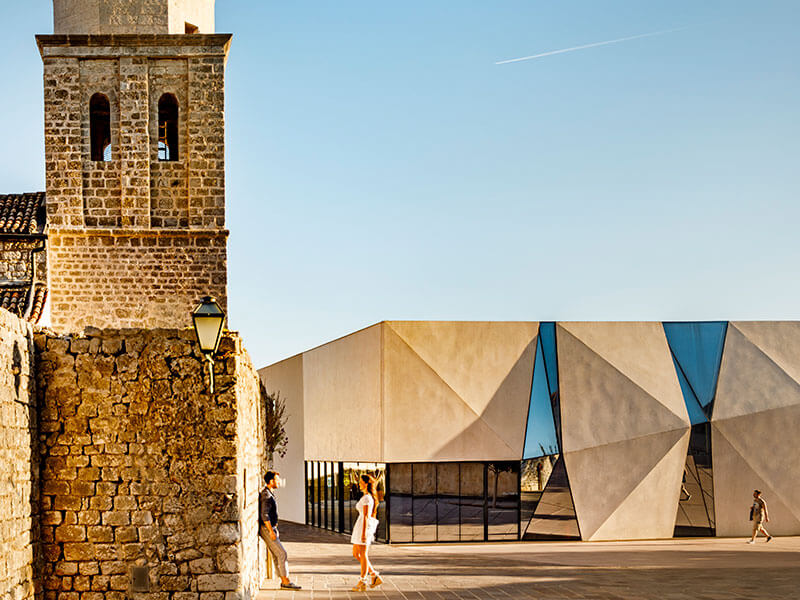
Best attractions on the island of Krk
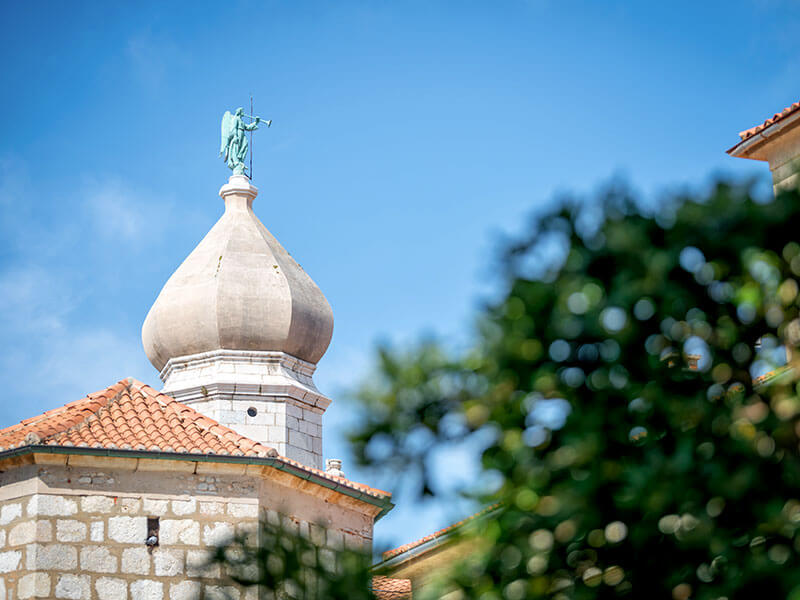
Krk Cathedral
Krk Cathedral, a historical beacon located in Krk’s old town, stands as a testament to centuries of religious and architectural evolution. Originally an early Christian Basilica built on the remnants of 1st-century Roman baths, the cathedral saw its major construction phase in the 12th century. Today, it captivates visitors not only with its spiritual significance but also with unique carvings, each telling a story of the past.
- Type of attraction: historical and religious site
- Location: Krk old town
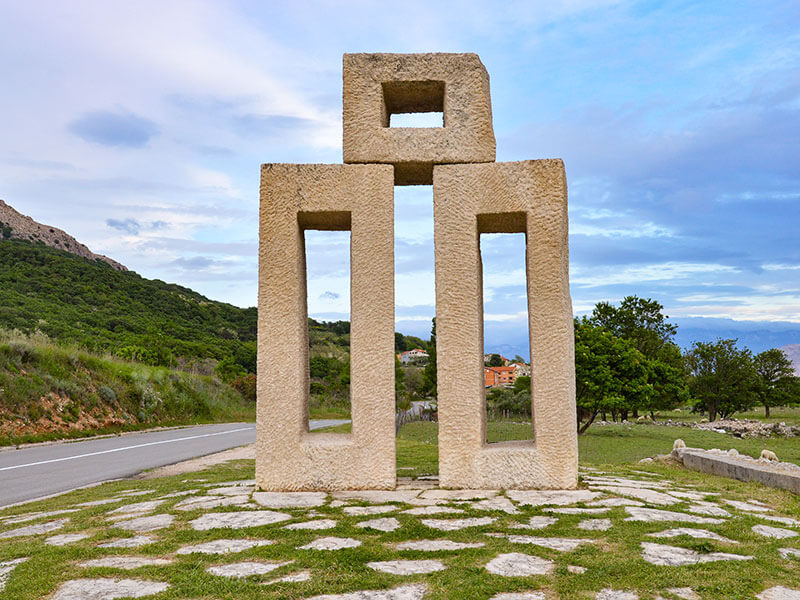
Baška Glagolitic Path
Discover the rich history and stunning natural beauty of the Baška Valley through the unique Baška Glagolitic Path. This captivating trail, adorned with 34 stone sculptures representing the Glagolitic alphabet, offers a journey through time, celebrating centuries of local and national culture. Each sculpture guides visitors to significant historical and cultural landmarks, making it an educational and picturesque experience. From the mountain pass of Treskavac to the charming Old Pier in Baška’s harbour, this path is a tribute to the enduring legacy of the Glagolitic script on Krk Island.
- Type of attraction: cultural and historical trail
- Location: the trail starts from the Treskavac Pass, at the entrance to Baška Valley, and ends at Old Pier (Stara Riva) in Baška’s harbour
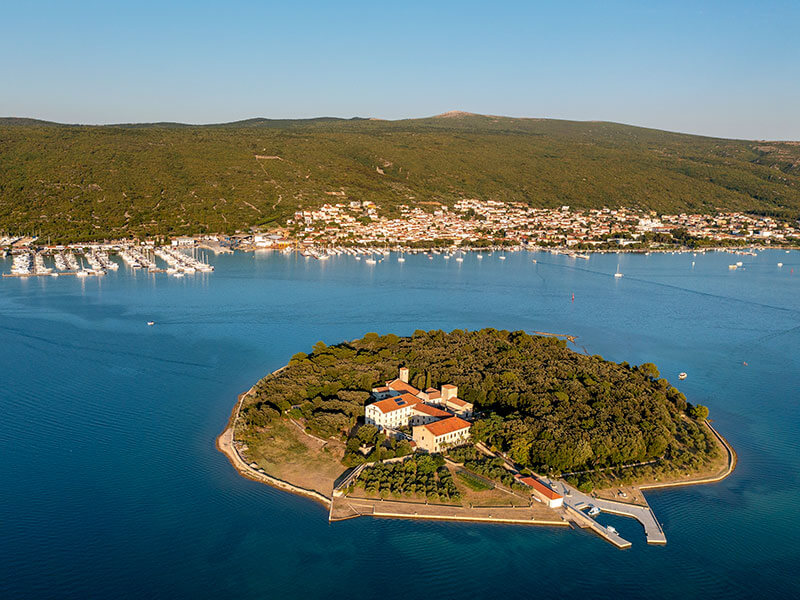
Košljun
Košljun is a charming island in the Adriatic near Punat, offering more than just a scenic view; it’s a spiritual journey. This compact island, only 300 meters wide, houses a historic Franciscan monastery. Visitors can delve into a museum filled with an extensive ethnographic collection and explore a library that holds over 30,000 books. The island's lush greenery and historical significance provide a rare glimpse into monastic life amid stunning natural beauty. It’s an ideal retreat for those yearning for peace and a deeper connection with Croatian cultural and religious heritage.
- Type of attraction: cultural, natural
- Location: Košljun is located in Puntarska Draga Bay, facing Punat on Krk Island
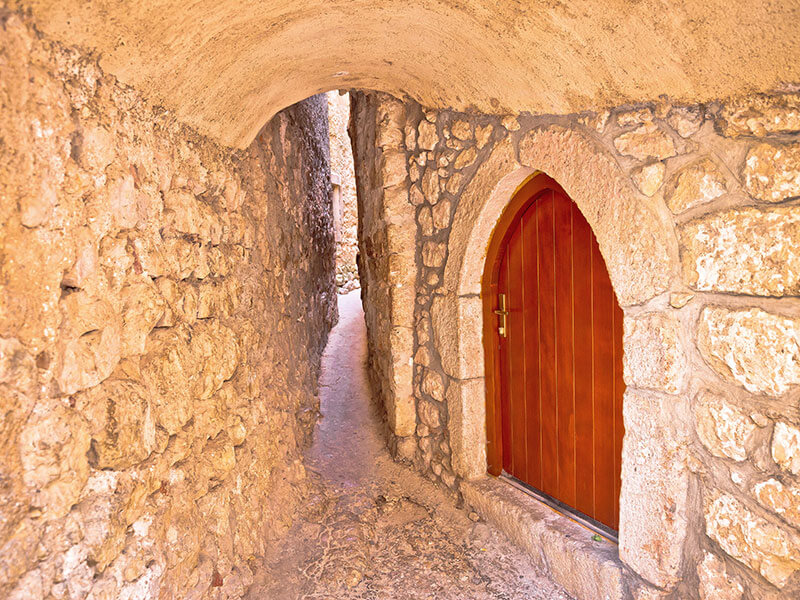
The narrowest street in the world
The narrowest street in the world, located in the charming town of Vrbnik on Krk Island, is a sight to behold. This alley, known as Klančić, measures just 43 centimetres at its narrowest point, compelling visitors to turn sideways to pass through. It is so small due to medieval urban planning, where space was maximised within fortified walls, resulting in extremely narrow streets used for defence. This tiny passage not only provides a fun photo opportunity but also leads you deeper into the heart of Vrbnik, where more adventures await.
- Type of attraction: architectural
- Location: Vrbnik, Krk Island
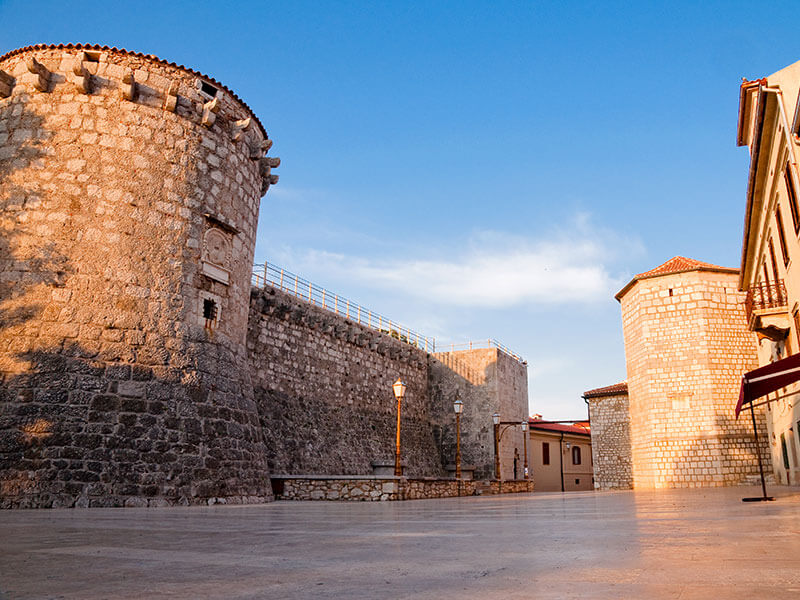
Frankopan Castle in Krk
Frankopan Castle, perched in the heart of Krk Town, is a historical attraction dating back to the 12th century. Constructed by the influential Frankopan family, this majestic fortress embodies the strength and spirit of Croatia’s medieval past. With its robust walls and strategic position, it played a crucial role in defending the region while serving as a vital administrative and cultural centre. Today, the castle welcomes visitors from around the globe, enchanting them with its rich history, beauty and exhibitions that narrate the tales of nobility, battles and everyday life in medieval times.
- Type of attraction: historical, architectural
- Location: centre of Krk Town
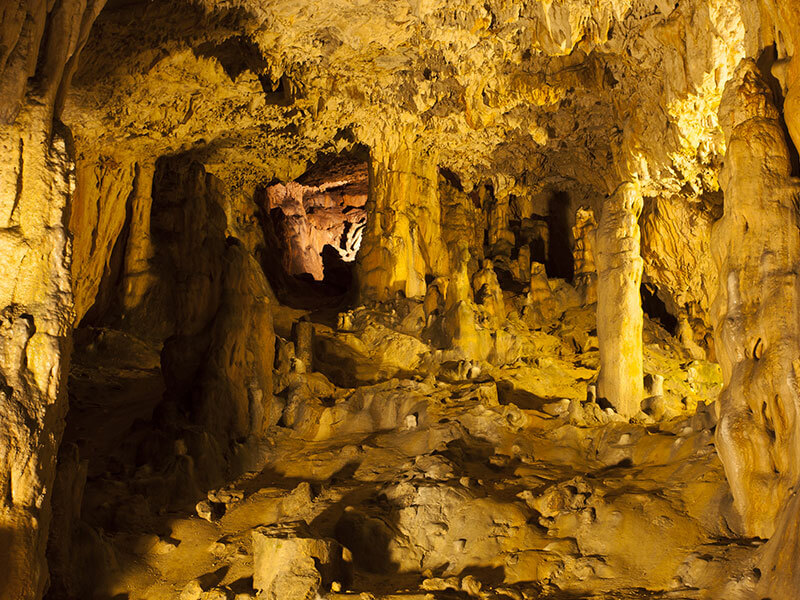
Biserujka Cave
In the village of Rudine on Krk Island lies the Biserujka Cave, a geological marvel that beckons explorers and nature lovers alike. Spanning 110 metres, this underground wonder is adorned with an impressive array of stalagmites and stalactites, creating a landscape of shadows and calcite columns within its depths. Visitors are treated to a captivating spectacle that feels like stepping into another world. The cave offers guided tours upon request, making it a must-visit for those looking to uncover the secrets of Krk’s subterranean beauty.
- Type of attraction: natural
- Location: Rudine, Krk Island
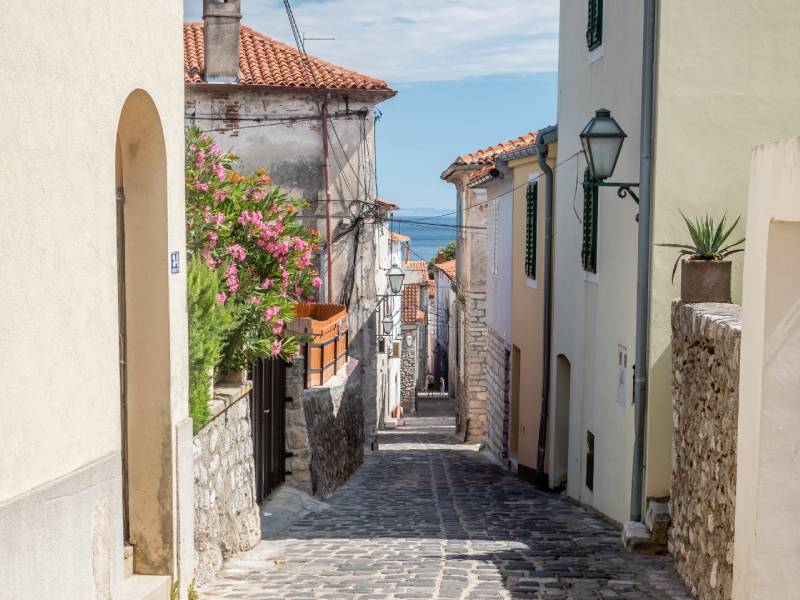
The walls and streets of Krk’s old town
Krk’s old town, encircled by ancient walls and woven with narrow, winding streets, offers a mesmerising step back into the past. These historic fortifications date back to Roman times and were later expanded by the Venetians, thus showcasing layers of architectural evolution. Strolling through these cobblestone paths, visitors are enveloped in a timeless atmosphere, with each turn revealing charming courtyards, medieval buildings and remnants of the town’s storied defences. This area serves as a living museum, where history, culture and architecture intertwine, providing a captivating experience for history buffs, photographers and curious travellers alike.
- Type of attraction: historical, cultural
- Location: Krk Town
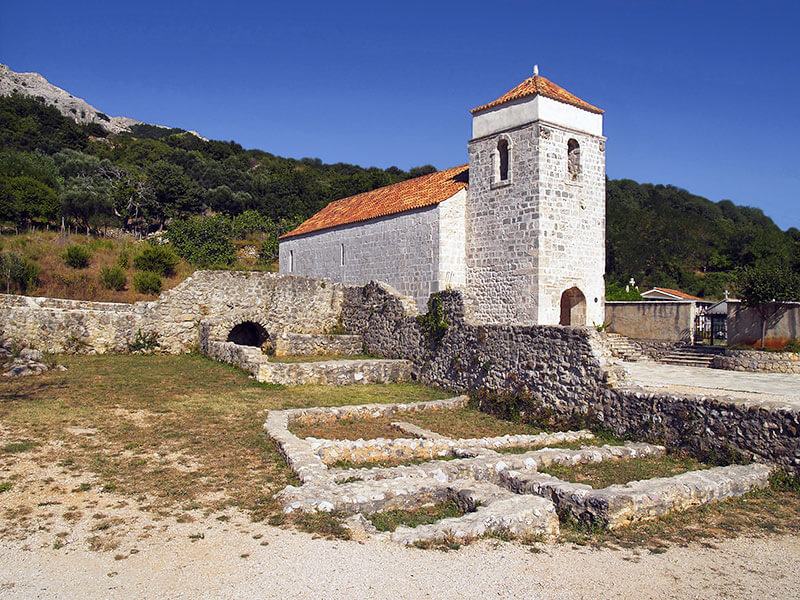
Baška Tablet
The Baška Tablet is a significant archaeological and cultural artefact, heralded as one of the most important monuments of early Croatian literacy. Dating back to around 1100 AD, this stone slab was found in the Church of St Lucy in Jurandvor near Baška on Krk Island. The inscription, written in Glagolitic script, marks the earliest known use of the Croatian name in the Croatian language, making it a priceless cultural and linguistic monument. Today, it stands as a symbol of Croatian identity and medieval literacy.
- Type of attraction: historical, cultural
- Location: Jurandvor near Baška
Customer services
Other services
Valamar Riviera d.d. has accommodation facilities in the Republic of Croatia and the Republic of Austria, where it operates through its branch Valamar Riviera d.d., Zweigniederlassung Austria, Gamsleitenstraße 6, 5563 Obertauern, FN 583355 a (Landesgericht Salzburg), VAT ID: ATU 78289647. Additionally, Valamar is a management company that, based on contracts, manages the tourism segment of the business and offers accommodation services in the facilities of Imperial Riviera d.d., Republic of Croatia, Rab, Jurja Barakovića 2, OIB: 90896496260 and HELIOS FAROS d.d., Republic of Croatia, Stari Grad, Naselje Helios 5, OIB: 48594515409. The term Valamar properties includes accommodation facilities of Valamar Riviera d.d., in Croatia and Austria, as well as accommodation facilities of other companies it manages.
